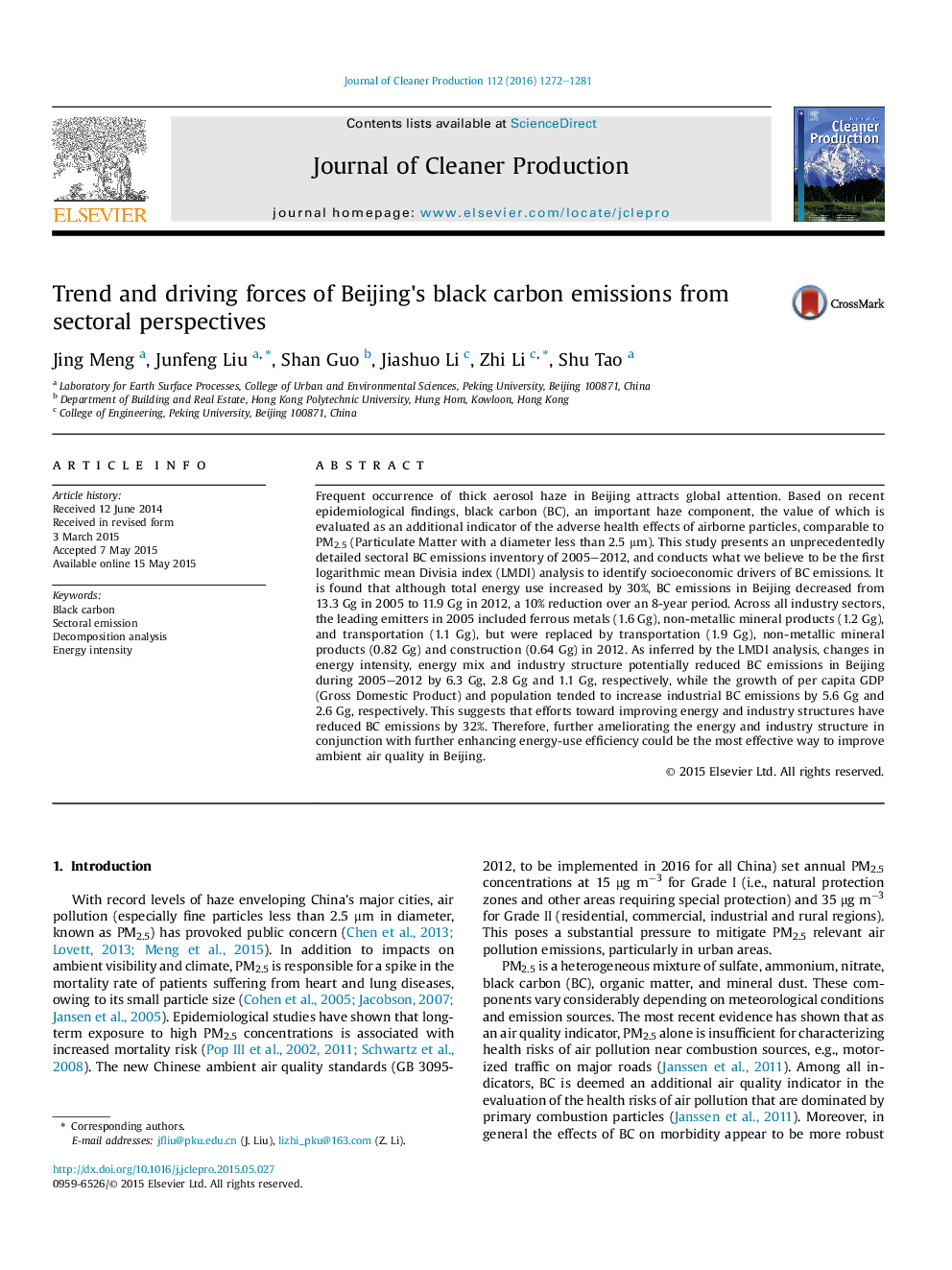| Article ID | Journal | Published Year | Pages | File Type |
|---|---|---|---|---|
| 1744300 | Journal of Cleaner Production | 2016 | 10 Pages |
•An emission inventory of BC with 55 sectors for Beijing in 2005–2012 is developed.•Transportation and non-metallic mineral products are the leading BC contributors in Beijing 2012.•Improvement of energy intensity and industry structure significantly reduced BC in Beijing.
Frequent occurrence of thick aerosol haze in Beijing attracts global attention. Based on recent epidemiological findings, black carbon (BC), an important haze component, the value of which is evaluated as an additional indicator of the adverse health effects of airborne particles, comparable to PM2.5 (Particulate Matter with a diameter less than 2.5 μm). This study presents an unprecedentedly detailed sectoral BC emissions inventory of 2005–2012, and conducts what we believe to be the first logarithmic mean Divisia index (LMDI) analysis to identify socioeconomic drivers of BC emissions. It is found that although total energy use increased by 30%, BC emissions in Beijing decreased from 13.3 Gg in 2005 to 11.9 Gg in 2012, a 10% reduction over an 8-year period. Across all industry sectors, the leading emitters in 2005 included ferrous metals (1.6 Gg), non-metallic mineral products (1.2 Gg), and transportation (1.1 Gg), but were replaced by transportation (1.9 Gg), non-metallic mineral products (0.82 Gg) and construction (0.64 Gg) in 2012. As inferred by the LMDI analysis, changes in energy intensity, energy mix and industry structure potentially reduced BC emissions in Beijing during 2005–2012 by 6.3 Gg, 2.8 Gg and 1.1 Gg, respectively, while the growth of per capita GDP (Gross Domestic Product) and population tended to increase industrial BC emissions by 5.6 Gg and 2.6 Gg, respectively. This suggests that efforts toward improving energy and industry structures have reduced BC emissions by 32%. Therefore, further ameliorating the energy and industry structure in conjunction with further enhancing energy-use efficiency could be the most effective way to improve ambient air quality in Beijing.
